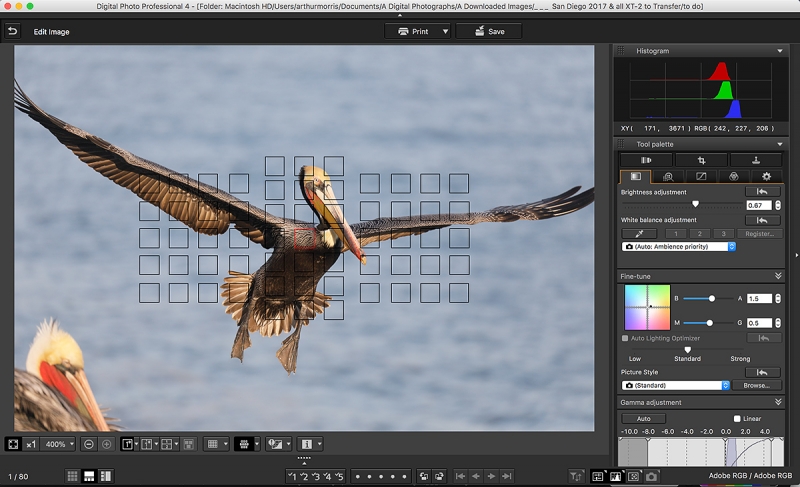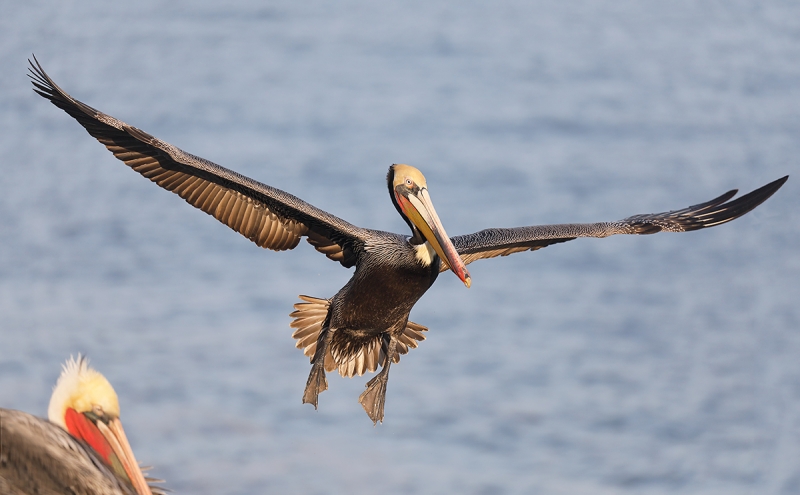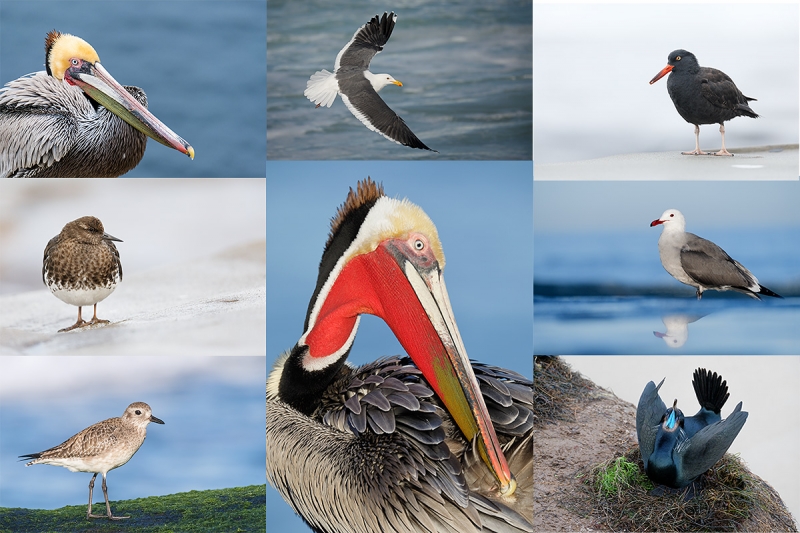Stuff
I have an appointment with my financial guy in Lake Success this afternoon and will likely drop into the East Pond this afternoon. It has been a while.
The Streak
Today makes seventy days in a row with a new educational blog post! This one took about two hours to prepare (including the time spent on the image optimization). With all of my upcoming free time (or not …), the plan right now is to break the current record streak of (I think) four hundred eighty something … Good health and good internet connections willing.
Booking.Com
Booking.Com came through for me once again with both my DeSoto IPT and next July’s UK Puffins, Gannets, and Bempton Pre-trip room reservations. And all the rates were great. If you’d like to give Booking.Com a shot, click here and you will earn a $25 reward. Thanks to the many who have already tried and used this great service.


Gear Questions and Advice
Too many folks attending BAA IPTs and dozens of folks whom I see in the field, and on BPN, are–out of ignorance–using the wrong gear especially when it comes to tripods and more especially, tripod heads… Please know that I am always glad to answer your gear questions via e-mail.
|
|
The DPP 4 Screen Capture for today’s featured image |
The DPP 4 Screen Capture/Another Lying Histogram
A quick glance at the DPP 4 screen capture seems to indicate a big underexposure. But by checking the RGB values with the cursor placed on the brightest WHITEs on the extraneous pelican’s head, we see R=242, G=227, B=206. Why such warm light? This image was created in sweet early morning sunlight. Do note that the RAW file was originally too dark as I had to move the Brightness slider to +.67 stops. As far as the RGB histograms go, the BLUE histogram simply shows that the there is lots of blue Pacific in the image.
The Extraneous Pelican Question
If this image were yours, would you keep or eliminate the extraneous pelican in the lower left corner? Why or why not?
|
|
|
This image was created on the 2017 San Diego IPT with the hand held Canon EF 100-400mm f/4.5-5.6L IS II USM lens (at 321mm) and my favorite pelican flight photography camera body, the Canon EOS 5D Mark IV. ISO 800. Evaluative metering +1/3 stop as framed: 1/3200 sec. at f/5.6 in Manual mode. AWB. Center AF point/Manual selection/AI Servo/Shutter Button AF was active at the moment of exposure. See the placement of the selected AF point (illuminated-in-red) in the DPP 4 screen capture below. Note that it is right on the same plane as the pelican’s eye. Click on the image to enjoy a larger version. LensAlign/FocusTune micro-adjustment: 1. The Optimized Image: Brown Pelican incoming flight |
Universal Advice for Better Flight Photography with a Zoom Lens
Here is my simple universal advice for better flight (or action) photography with a zoom lens: don’t be so greedy: zoom wider!
The Image Optimization
The obvious problems with the original image were the two clipped wingtips. First, I expanded canvas with the Crop Tool’s love-handles. John Haedo Content Aware Fill dealt nicely with the extraneous pelican and did not do too bad a job with the missing wingtip stuff on the right frame-edge. I fine-tuned that with the Clone Stamp Tool and a small Quick Mask or two (refined by Regular Layer Masks). For the missing primary tips I used a series of small Quick Masks, each fine-tuned with the addition of a Regular Layer Mask. These techniques are detailed in APTATS I.
Image Design Question
Would you have added and filled in a bit more canvas on the right frame-edge? Why or why not?
|
|
|
The BIRDS AS ART Current Workflow e-Guide (Digital Basics II) will teach you an efficient Mac/Photo Mechanic/Photoshop workflow that will make it easy for you to make your images better in Photoshop (rather than worse). That true whether you convert your images in DPP 4 or ACR. See the blog post here to learn lots more and to read a free excerpt. You can order your copy from the BAA Online Store here, by sending a Paypal for $40 here, or by calling Jim or Jennifer weekdays at 863-692-0906 with your credit card in hand. |
The BIRDS AS ART Current Workflow e-Guide (Digital Basics II)
Everything mentioned above (and tons more) is covered in detail in the BIRDS AS ART Current Workflow e-Guide (Digital Basics II), an instructional PDF that is sent via e-mail. Learn more and check out the free excerpt in the blog post here. The new e-Guide reflects my Macbook Pro/Photo Mechanic/DPP 4/Photoshop workflow. Do note that you will find the RGB Curves Adjustment Color Balancing tutorial only in the new e-guide. Note: folks working on a PC and/or those who do not want to miss anything Photoshop may wish to purchase the original Digital Basics along with DB II while saving $15 by clicking here to buy the DB Bundle.
The two most recent and many of the older MP4 Photoshop Tutorial videos releases go hand and hand with the information in DB II):
Folks who learn well by following along rather than by reading can check out the complete collection of MP 4 Photoshop Tutorial Videos by clicking here.
You can learn how and why I and other discerning Canon shooters convert nearly all of their Canon digital RAW files in DPP 4 using Canon Digital Photo Professional in the DPP 4 RAW conversion Guide here. And you can learn advanced Quick Masking and advanced Layer Masking techniques in APTATS I & II. You can save $15 by purchasing the pair. Folks can learn sophisticated sharpening and (NeatImage) Noise Reduction techniques in the The Professional Post Processing Guide by Arash Hazeghi and yours truly.
|
|
2017 in San Diego was a very good year …. |
2018 San Diego 4 1/2-DAY BIRDS AS ART IPT: Monday, JAN 15 thru and including the morning session on Friday, JAN 19, 2018: 4 1/2 days: $2099.
Limit: 8: Openings: 1
Meet and Greet at 6:30pm on the evening before the IPT begins; Sunday, Jan 14, 2018.
Join me in San Diego to photograph the spectacular breeding plumage Brown Pelicans with their fire-engine red and olive green bill pouches; Brandt’s (usually nesting and displaying) and Double-crested Cormorants; breeding plumage Ring-necked Duck; other duck species possible including Lesser Scaup, Redhead, Wood Duck and Surf Scoter; a variety of gulls including Western, California, and the gorgeous Heerman’s, all in full breeding plumage; shorebirds including Marbled Godwit, Whimbrel, Willet, Sanderling and Black-bellied Plover; many others possible including Least, Western, and Spotted Sandpiper, Black and Ruddy Turnstone, Semipalmated Plover, and Surfbird; Harbor Seal (depending on the current regulations) and California Sea Lion; and Bird of Paradise flowers. And as you can see by studying the two IPT cards there are some nice bird-scape and landscape opportunities as well. Please note: formerly dependable, both Wood Duck and Marbled Godwit have been declining at their usual locations for the past two years …
|
San Diego offers a wealth of very attractive natural history subjects. With annual visits spanning more than three decades I have lot of experience there…. |
With gorgeous subjects just sitting there waiting to have their pictures taken, photographing the pelicans on the cliffs is about as easy as nature photography gets. With the winds from the east almost every morning there is usually some excellent flight photography. And the pelicans are almost always doing something interesting: preening, scratching, bill pouch cleaning, or squabbling. And then there are those crazy head throws that are thought to be a form of intra-flock communication. You can do most of your photography with an 80- or 100-400 lens …
Did I mention that there are wealth of great birds and natural history subjects in San Diego in winter?
|
Though the pelicans will be the stars of the show on this IPT there will be many other handsome and captivating subjects in wonderful settings. |
The San Diego Details
This IPT will include five 3 1/2 hour morning photo sessions, four 2 1/2 hour afternoon photo sessions, four lunches, and after-lunch image review and Photoshop sessions. To ensure early starts, breakfasts will be your responsibility. Dinners are on your own so that we can get some sleep.
A $599 non-refundable deposit is required to hold your slot for this IPT. You can send a check (made out to “Arthur Morris) to us at BIRDS AS ART, PO Box 7245, Indian Lake Estates, FL, 33855. Or call Jim or Jennifer at the office with a credit card at 863-692-0906. Your balance, payable only by check, will be due on 9/11//2016. If we do not receive your check for the balance on or before the due date we will try to fill your spot from the waiting list. Please print, complete, and sign the form that is linked to here and shoot it to us along with your deposit check. If you register by phone, please print, complete and sign the form as noted above and either mail it to us or e-mail the scan. If you have any questions, please feel free to contact me via e-mail.
If In Doubt …
If in doubt about using the BAA B&H affiliate link correctly, you can always start your search by clicking here. Please note that the tracking is invisible. Web orders only. Please, however, remember to shoot me your receipt via e-mail.




Please Remember to use my Affiliate Links and to Visit the New BAA Online Store 🙂
To show your appreciation for my continuing efforts here, we ask, as always, that you get in the habit of using my B&H affiliate links on the right side of the blog for all of your photo and electronics purchases. Please check the availability of all photographic accessories in the New BIRDS AS ART Online Store, especially the Mongoose M3.6 tripod head, Wimberley lens plates, Delkin flash cards and accessories, and LensCoat stuff.
As always, we sell only what I have used, have tested, and can depend on. We will not sell you junk. We know what you need to make creating great images easy and fun. And please remember that I am always glad to answer your gear questions via e-mail.
I would of course appreciate your using our B&H affiliate links for all of your major gear, video, and electronic purchases. For the photographic stuff mentioned in the paragraph above, and for everything else in the new store, we, meaning BAA, would of course greatly appreciate your business. Here is a huge thank you to the many who have been using our links on a regular basis and those who will be visiting the New BIRDS AS ART Online Store as well.
Amazon.com
Those who prefer to support BAA by shopping with Amazon may use the logo link above.
Amazon Canada
Many kind folks from north of the border, eh, have e-mailed stating that they would love to help us out by using one of our affiliate links but that living in Canada and doing so presents numerous problems. Now, they can help us out by using our Amazon Canada affiliate link by starting their searches by clicking here.
Be sure to like and follow BAA on Facebook by clicking on the logo link upper right. Tanks a stack.
Typos
In all blog posts and Bulletins, feel free to e-mail or to leave a comment regarding any typos or errors. Just be right :).




















I might want to play around by removing the pelican in the corner and expanding the bottom portion of the frame to create a sense of space and landing. Don’t know if it would work but it might be worthwhile experimenting. Love the wingtip work.
Personally, I’d leave the pelican head in the lower left portion of the picture. I shoot a lot of birds in flight, and I think that is just different enough from all the rest, to where it’s worth saving. Remember, it can always be removed later, if you change your mind.
I agree with Greg & Aaron hope you’re getting back to normal.
I’d drop the lower left pelican also. I don’t think it adds to the image….in fact, I think it distracts from it. I need to spend the time necessary to clean up the borders of some of my own images.
Hi Artie,
At first blush I may have never considered trying to save the image and hoped for better opportunities without clipped wings. But looking at the blown up version of the finished image, considering its quality, I may have changed my mind and put in the effort to try to save it. As you have said, the cliffs in La Jolla offer in-numerous opportunities for these kinds of shots. That said, again looking at the quality of the incoming pelican, I think I would lose the pelican on the lower left, but it does provide some context as to what is going on at the cliffs. Still, lose the lower left pelican (overall – distracting). Assuming you remove the lower left pelican, IMO, you definitely need to add canvas on the right. The pelican needs a little more space to fly into. What the lower left pelican provides is balance to the image as is. When gone, the remaining pelican is too centered and too tight in the frame.
That’s my $.02.
Hi, Artie. I would leave the extraneous pelican because that’s what I do (or don’t do), but I agree with Greg and Aaron Chandler that the image would be better if it were removed for the reasons they give. I can’t help smiling at your excellenr advice for photographing flying birds. Mine for beginning bird photographers always is “get closer.”
I would remove the pelican in the bottom left corner.
While he/she appears to be a nice enough pelican, and I am sure this pelican has never done anything personally to me in my life, I find it an unnecessary distraction from the main subject.
Hope you are doing well Artie.
Aaron
I would remove the additional pelican’s head.
It draws the eye away from the striking pose of the pelican in flight, it is somewhat out of focus (but not enough) and the eye is closed.